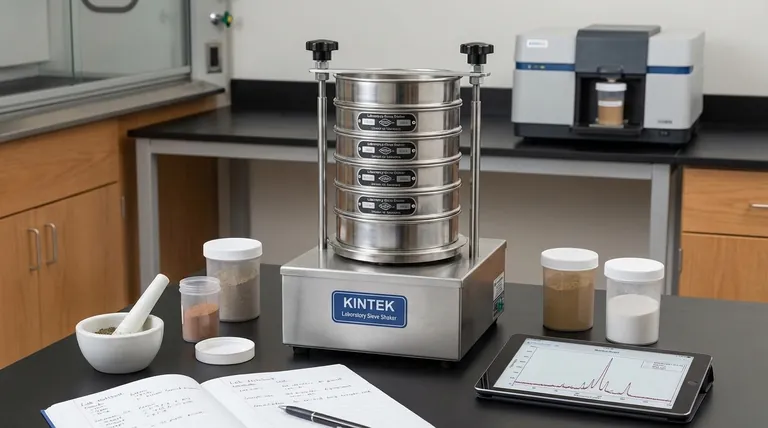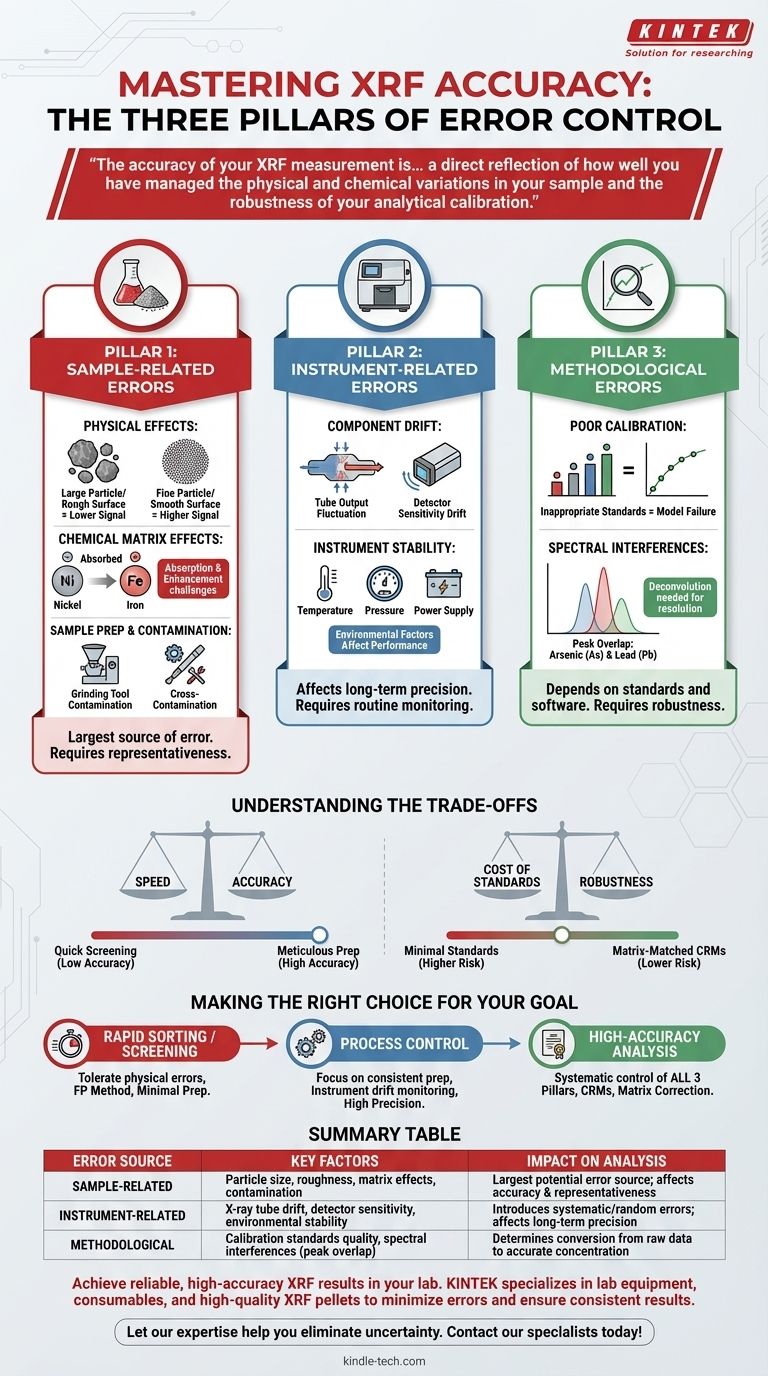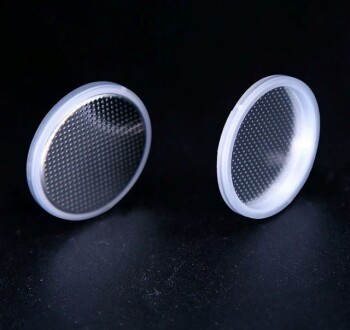Nell'analisi a fluorescenza a raggi X (XRF), gli errori hanno origine da tre domini principali: il campione stesso (proprietà fisiche e chimiche), l'hardware e la stabilità dello strumento, e il metodo analitico o la calibrazione utilizzati. Sebbene fattori come la contaminazione del campione durante la preparazione siano significativi, un risultato veramente accurato dipende dal controllo delle variabili in tutte e tre le aree.
L'accuratezza della tua misurazione XRF non è solo una funzione della qualità dello spettrometro, ma un riflesso diretto di quanto bene hai gestito le variazioni fisiche e chimiche nel tuo campione e la robustezza della tua calibrazione analitica.

I Tre Pilastri dell'Errore XRF
Per ottenere risultati affidabili, è necessario comprendere dove possono essere introdotte potenziali imprecisioni. Possiamo raggruppare queste fonti in tre categorie distinte.
Pilastro 1: Errori Legati al Campione
Questa è spesso la maggiore fonte di errore. Lo spettrometro può misurare solo il campione che gli viene presentato; se il campione non è una vera rappresentazione del materiale sfuso, i risultati saranno errati.
Effetti Fisici
La natura fisica del campione influenza drasticamente il segnale a raggi X. I fattori chiave includono la dimensione delle particelle, la rugosità superficiale e l'uniformità del campione.
Le particelle più fini generalmente producono un segnale di fluorescenza più intenso rispetto a quelle più grandi. Una macinatura incoerente o una superficie ruvida possono portare a errori significativi e imprevedibili.
Effetti della Matrice Chimica
Questo si riferisce a come altri elementi nel campione assorbono o migliorano i raggi X dall'elemento che si sta cercando di misurare. Questa è una sfida fondamentale nella XRF.
Ad esempio, un'alta concentrazione di ferro assorbirà pesantemente la fluorescenza del nichel, facendo apparire il nichel meno concentrato di quanto non sia in realtà. Questi effetti devono essere corretti matematicamente.
Preparazione e Contaminazione del Campione
Il modo in cui un campione viene preparato è un punto di controllo critico. Gli errori introdotti qui sono irreversibili.
Come notato, la contaminazione da attrezzature di macinazione può introdurre elementi estranei. Allo stesso modo, la contaminazione incrociata da campione a campione può verificarsi se gli strumenti di preparazione non vengono puliti meticolosamente tra un utilizzo e l'altro.
Pilastro 2: Errori Legati allo Strumento
Sebbene gli spettrometri XRF moderni siano altamente stabili, non sono perfetti. Le variazioni hardware possono introdurre errori sistematici o casuali nell'analisi.
Deriva dei Componenti
I due componenti più critici, il tubo a raggi X e il rivelatore, possono subire cambiamenti di prestazioni nel tempo.
L'intensità di uscita del tubo può fluttuare e la sensibilità del rivelatore può derivare a causa di cambiamenti di temperatura o invecchiamento. Questi cambiamenti sono solitamente lenti e possono essere gestiti con un monitoraggio di routine.
Stabilità dello Strumento
Fattori come la temperatura ambiente, la pressione barometrica (in alcuni sistemi) e la stabilità dell'alimentazione possono influenzare le prestazioni dello spettrometro.
Mantenere un ambiente controllato per lo strumento è cruciale per ottenere risultati analitici di alta precisione a lungo termine.
Pilastro 3: Errori Metodologici e di Calibrazione
Anche con un campione perfetto e uno strumento stabile, il risultato finale dipende interamente dal metodo analitico e dalla qualità della calibrazione.
Calibrazione Scarsa
La calibrazione è il modello matematico che converte le intensità grezze dei raggi X in concentrazioni elementari. Questo modello è valido solo quanto gli standard utilizzati per crearlo.
L'uso di standard di calibrazione insufficienti o inappropriati che non corrispondono alla matrice chimica dei campioni sconosciuti è una fonte primaria di errore analitico maggiore.
Interferenze Spettrali
A volte, le linee caratteristiche dei raggi X di due elementi diversi sono così vicine tra loro che il rivelatore non riesce a risolverle. Questo è noto come sovrapposizione di picchi.
Ad esempio, la linea K-alfa dell'arsenico si sovrappone alla linea K-beta del piombo. È necessario un software sofisticato per deconvolvere matematicamente questi picchi e riportare un risultato accurato per ciascun elemento.
Comprendere i Compromessi
Controllare ogni fonte di errore può essere dispendioso in termini di tempo e denaro. La chiave è adeguare la preparazione e il rigore analitico al proprio obiettivo specifico.
Velocità vs. Accuratezza
Un'analisi rapida, "punta e spara" su un campione non preparato potrebbe essere sufficiente per una semplice identificazione o screening del materiale.
Tuttavia, questo approccio sacrifica l'accuratezza ed è completamente inadatto per il controllo qualità o la conformità normativa, dove una meticolosa preparazione del campione (come la macinazione e la pressatura di pastiglie) è non negoziabile.
Costo degli Standard vs. Robustezza
La creazione di una calibrazione robusta richiede una vasta gamma di materiali di riferimento certificati di alta qualità e con matrice corrispondente, che possono essere costosi.
L'uso di un set minimo di standard o l'affidamento alla "standardizzazione di tipo" (regolazione di una calibrazione di fabbrica con uno o due campioni locali) è più economico ma introduce un rischio maggiore di errore se i campioni si discostano dagli standard.
Fare la Scelta Giusta per il Tuo Obiettivo
La tua strategia analitica dovrebbe essere dettata dalla domanda a cui devi rispondere.
- Se il tuo obiettivo principale è la rapida selezione o screening dei materiali: Spesso puoi tollerare errori dovuti a effetti fisici e utilizzare un semplice metodo a parametri fondamentali (FP), minimizzando la preparazione del campione.
- Se il tuo obiettivo principale è il controllo di processo con un tipo di materiale noto: La tua preoccupazione principale è la precisione, quindi concentrati su una preparazione del campione altamente coerente e sul monitoraggio di routine della deriva dello strumento.
- Se il tuo obiettivo principale è un'analisi di alta precisione per la certificazione o la ricerca: Devi affrontare sistematicamente tutti e tre i pilastri, utilizzando una meticolosa preparazione del campione, materiali di riferimento certificati per la calibrazione e software di correzione della matrice.
In definitiva, raggiungere l'accuratezza nella XRF è un esercizio di controllo sistematico, dove comprendere le potenziali fonti di errore è il primo passo per eliminarle.
Tabella riassuntiva:
| Fonte di Errore | Fattori Chiave | Impatto sull'Analisi |
|---|---|---|
| Legati al Campione | Dimensione delle particelle, rugosità superficiale, effetti della matrice chimica, contaminazione | Maggiore potenziale fonte di errore; influisce sull'accuratezza e sulla rappresentatività del risultato |
| Legati allo Strumento | Deriva del tubo a raggi X, sensibilità del rivelatore, stabilità ambientale | Introduce errori sistematici o casuali; influisce sulla precisione a lungo termine |
| Metodologici | Qualità degli standard di calibrazione, interferenze spettrali (sovrapposizione di picchi) | Determina la conversione dai dati grezzi a valori di concentrazione accurati |
Ottieni risultati XRF affidabili e di alta precisione nel tuo laboratorio.
Il percorso verso un'analisi precisa richiede il controllo delle variabili tra campione, strumento e metodo. KINTEK è specializzata in attrezzature e materiali di consumo da laboratorio, soddisfacendo le esigenze di laboratorio con pastiglie XRF di alta qualità, presse e accessori progettati per minimizzare gli errori di preparazione del campione e garantire risultati coerenti.
Lascia che la nostra esperienza ti aiuti a eliminare l'incertezza. Contatta i nostri specialisti oggi stesso per discutere la tua applicazione specifica e come possiamo supportare i tuoi obiettivi analitici.
Guida Visiva

Prodotti correlati
- Vagli da Laboratorio e Setacciatrici
- Strumento di setacciatura elettromagnetica tridimensionale
- Sterilizzatore da Laboratorio Autoclave Sterilizzatore a Sollevamento Sottovuoto Pulsato
- Produttore personalizzato di parti in PTFE Teflon per pinzette in PTFE
- Autoclave da Laboratorio Sterilizzatore Verticale a Vapore Sotto Pressione per Display a Cristalli Liquidi Tipo Automatico
Domande frequenti
- Quali sono i passaggi del metodo di setacciatura? Una guida per una separazione accurata delle dimensioni delle particelle
- Che tipo di materiali possono essere separati con il metodo del setacciamento? Una guida all'efficiente separazione granulometrica
- Quale attrezzatura viene utilizzata per i setacci quando si eseguono prove di setacciatura? Ottieni un'analisi accurata delle dimensioni delle particelle
- Quali sono gli apparecchi utilizzati per l'analisi granulometrica a setaccio? Costruisci un sistema affidabile per la misurazione delle dimensioni delle particelle
- Quale intervallo di dimensioni delle particelle si applica all'analisi granulometrica? Padroneggia lo standard da 25 micron a 1 mm


















